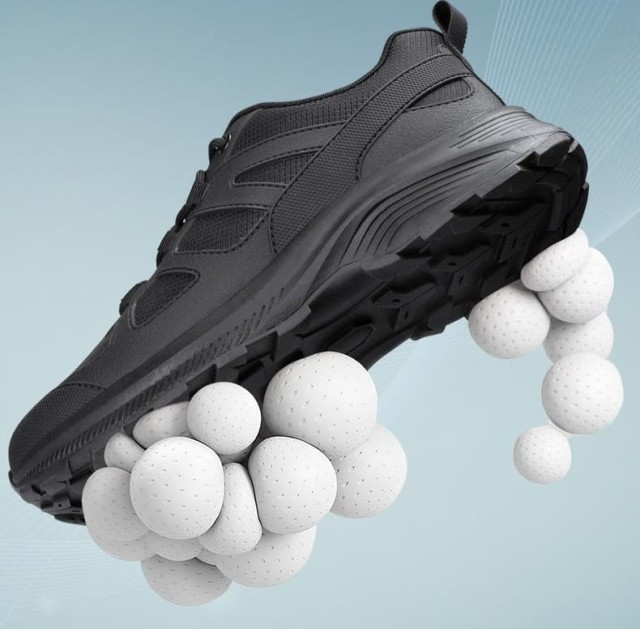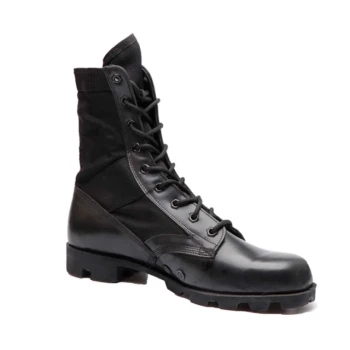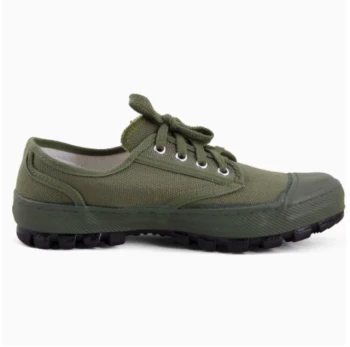Every year, thousands of workplace injuries stem from inadequate footwear—fatigue-induced falls, ankle sprains, or slips on hazardous surfaces. Quality work boots with engineered support features aren’t just about comfort; they’re injury prevention tools. Here’s how specific design elements mitigate risks, backed by biomechanics and real-world data.
The Science Behind Engineered Foot Support
How Arch Support Reduces Fatigue During Long Shifts
Poor arch support forces muscles to overcompensate, leading to exhaustion and balance loss. Work boots with contoured footbeds distribute weight evenly, reducing strain on the plantar fascia. Research shows workers wearing supportive footwear report significantly lower fatigue levels after 8+ hour shifts.
Key mechanisms:
- Shock absorption: Midsole materials (e.g., EVA foam) dampen impact from walking on hard surfaces.
- Weight redistribution: A 3D-molded arch prevents flat-footed collapse, maintaining natural gait alignment.
"Have you noticed how sore feet often lead to slouched posture? Proper arch support keeps the entire body aligned."
Ankle Collars and Lateral Stability: Preventing Sprains on Uneven Terrain
Ankle sprains account for a notable percentage of construction site injuries. Boots with padded collars and reinforced sidewalls limit excessive rolling motions.
Design features that help:
- Asymmetrical padding: Thicker cushioning on the outer ankle counters inversion sprains.
- High-top designs: Extend above the malleoli to restrict sideways movement without sacrificing mobility.
The Role of Boot Design in Hazard-Specific Environments
Anti-Slip Outsoles vs. Oil and Debris: Mechanics of Grip
Slips and falls often occur due to outsoles failing to adapt to mixed contaminants (oil, water, gravel). Advanced tread patterns channel liquids away while maintaining rubber-to-surface contact.
Traction technologies:
- Multi-directional lugs: Increase surface area for grip on angled surfaces.
- Oil-resistant rubber: Maintains flexibility in cold temperatures to prevent hardening.
Reinforced Toe Caps and Pedal Entrapment Prevention
Steel or composite toe caps protect against crushing, but their design also prevents boots from catching on machinery pedals or scaffolding. Rounded toe boxes reduce snag risks by up to half compared to traditional designs.
Real-World Impact: Case Studies and Industry Validation
Construction Site Fall Reduction: Data from OSHA Reports
After a national contractor switched to boots with anti-slip soles and ankle support, reported falls dropped by nearly a third within a year. OSHA highlights proper footwear as a top intervention for high-risk environments.
Warehouse Worker Comfort Surveys Post-Implementation
In a survey of logistics staff, over 70% reported fewer foot and back aches after adopting boots with arch support and cushioned heels. Productivity metrics also improved due to reduced breaks for pain relief.
Upgrade Your Safety Standards with 3515 Footwear
Distributors and bulk buyers: Partner with 3515 to equip workers with boots engineered to cut injury rates. Our range combines OSHA-compliant protection with biomechanically validated comfort—because fewer injuries mean higher productivity.
Ready to reduce workplace incidents? Contact 3515 for bulk solutions tailored to your industry’s hazards.
Products You Might Be Looking For:
Explore OSHA-compliant steel toe work boots
Related Products
- Wholesale Customizable Suede Safety Boots - Puncture-Proof with Velcro Closure
- Puncture-Resistant Velcro Safety Boots for Wholesale & Custom Manufacturing
- Wholesale Classic Leather Lace-Up Ankle Boots for Brand Manufacturing
- Durable Mid-Cut Tactical Boots for Wholesale & Private Label
- Wholesale Durable Mid-Cut Tactical Boots for Custom & Private Label Brands
Related Articles
- Matching Men’s Work Shoe Safety Technologies to Workplace Hazards
- How to Choose Work Boots That Match Your Job Demands and Safety Needs
- How to Choose Work Boot Materials for Maximum Safety and Durability
- How to Choose Work Boots That Match Your Industry's Safety Needs
- How Safety Work Boots Engineer Protection: Features and Standards for Targeted Hazard Mitigation



















